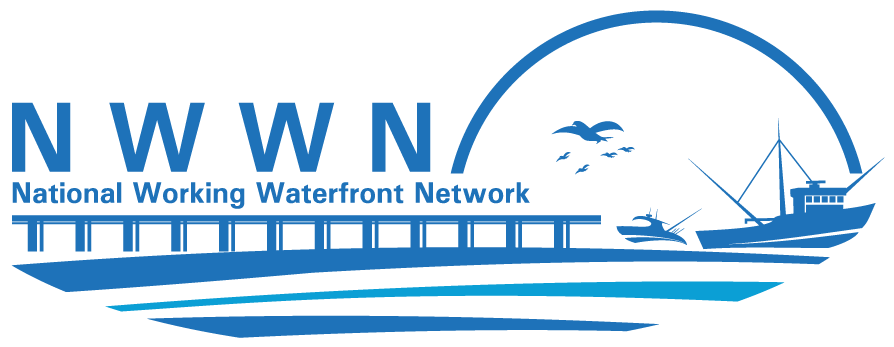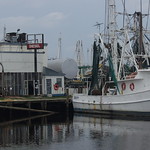Case Study
Alabama Waterfront Access Study Committee Launches Waterfront Protection Effort
Location
Alabama coast, especially Mobile County though expanding inventory work to entire coast (two counties in Alabama and three in Mississippi).
Timeframe
2006 to present, the actual Study was conducted 2008-2011
Summary
A House Joint Resolution during the 2008 Legislative Session created the Alabama Waterfront Access Study Committee to identify the loss and potential loss of diversity along the shorelines of Alabama, and to document how these losses impact access to the state’s public trust waters, including:
- Gathering information about local land-use management and zoning, current shoreline development trends, and local tax rates;
- Collecting research and information from Alabama and other states and jurisdictions regarding incentive-based techniques and management tools used to preserve waterfront diversity; and
- Assessing the applicability of such tools and techniques to the coastal shorelines of Alabama.
In March 2010, the Committee submitted a final report to the Legislature proposing recommendations in several categories, which partners are working to implement. In a recent development (early 2012), the City of Gulf Shores implemented a new overlay district which allows for the re-establishment of water-dependent businesses and provides model language regarding traditional, commercial, and recreational working waterfronts. The Alabama Working Waterfront Coalition has been working informally to advance working waterfront efforts throughout the state. Partners are considering formalizing this entity to directly address and implement recommendations made by the Study Committee.
Transferability
The approach of a legislative task force dedicated to research and recommendations on waterfront challenges and opportunities is replicable in other regions. The primary challenge faced by the WASC (legislative committee) was an unfunded mandate, but the partners’ dedication to the issue helped overcome this challenge. Having an organizational champion, such as the Mississippi Alabama Sea Grant Consortium, can help overcome the common problem of unfunded mandates.
As far as transferring tools from other regions to Alabama, some tools from other regions were not immediately transferable. For example, current use taxation was considered, but not recommended because Alabama’s low tax rate is an incentive that attracts businesses to the state.
Like most states, working waterfront language and protection provisions have not been incorporated into the State coastal management plan. This can be overcome, as in Alabama, through a viable and representative working waterfront coalition which is contingent on educating the appropriate working waterfront business owners/operators and related stakeholders about what defines a working waterfront and how they are affected. It is important to think broadly as to who might constitute a stakeholder. For example, although not expected in the beginning, charter fishing, chambers of commerce, and large-scale marine industrial businesses have all become key stakeholders.
Best Practices
- Sea Grant partnerships have resulted in developing legislative support. The membership of the Water Access Study Committee includes non-coastal working waterfront stakeholders, such as the Tennessee River Valley Association and the Alabama State Port Authority/Port of Mobile, who are active with the legislature and support of working waterfront efforts.
- Sea Grant’s Legal Program sponsored a working waterfront planners workshop that not only educated local, state, and regional planners, but led directly to the City of Gulf Shores request for assistance in incorporating working waterfronts into their zoning and land use plans.
Full Case Study Description
Background
Water is abundant in Alabama. The identity, culture, and economy of the state are tied to this precious resource that supports tourism, transportation, municipal and industrial water supply, fisheries production, and recreation. Access to Alabama’s waters has to be balanced with other desires for waterfront development. Competition for land use in the coastal zone has increased as the population has grown and tourism development has raised property values, resulting in a decrease in locally-owned working waterfront businesses. Waterfront lands are being converted to condominiums, casinos, and resorts. The issue is further exacerbated by natural and human-caused disasters that have led to coastal investment in various alternative uses, thereby accelerating the rate of conversion.
In 2006, two workshops were held to launch discussions in both Alabama and Mississippi about these working waterfront challenges. Shortly thereafter in 2008, Mississippi/Alabama Sea Grant Consortium funded the development of a database tool to assist with working waterfronts planning. The goal was to understand the dynamics of Alabama’s working waterfronts in addition to building a database of water-dependent businesses in the southwestern part of state. The database could be used to start quantifying current economic conditions and predict land use change in the Gulf region. It has served as a baseline for monitoring ongoing changes through time, which will aid in planning and decision-making processes.
These and other actions have contributed to the Alabama Legislature’s recognition of the importance of working waterfronts and their interest in looking at opportunities to preserve and enhance this valuable Alabama asset, especially in light of current rates of loss.
The Study Committee
House Joint Resolution 656, passed during the 2008 Legislative Session, created the Alabama Waterfront Access Study Committee. The charge was to provide to the Alabama Legislature a report outlining the loss and potential loss of the diversity of uses along the shorelines of Alabama, and to document how these losses impact access to the public trust waters of the state. The Committee was assigned the following duties:
- Gather information about local land-use management and zoning, current shoreline development trends, and local tax rates, including tax assessment trends for shoreline properties.
- Collect research and information from Alabama and other states and jurisdictions regarding incentive-based techniques and management tools used to preserve waterfront diversity.
- Assess the applicability of such tools and techniques to the coastal shorelines of Alabama.
In March 2010, the Committee submitted a final report to the Legislature proposing a series of recommendations in several categories and outlined in three priority tiers:
- Planning/Zoning (including completing a Comprehensive Working Waterfront Plan as defined by any related federal legislation; creating a Waterfronts Alabama Partnership Program to assist local and regional planning efforts; and seeking a waiver on fees for rebuilding waterfront properties after natural disasters.)
- Financial Incentives (including incentives for working waterfront businesses; establishing a fund for land acquisitions and identifying priority areas; and applying boater registration and other fees to manage and police working waterfronts.)
- Socio-economics (including conducting an economic inventory and an economic impact study of working waterfronts and waterfront access; enabling further technical assistance and outreach on these topics by Cooperative Extension and Sea Grant; and encouraging continued commercial use in working waterfronts.
- Infrastructure Issues (including directing all state agencies to expand public access in planning and construction programs; and encouraging federal and local agencies to incorporate waterfront access in projects in public trust waters.
Every one of these recommendations will have considerable policy implications, including for example, potential changes in local land use ordinances and zoning.
During the 2010 Regular Session, House Joint Resolution 840 was adopted, extending the Alabama Waterfront Access Study Committee to the 10th legislative day of the 2011 Regular Session. In 2011, during the Regular Session, the Committee was again extended for one year with the adoption of Senate Joint Resolution 43.
Next Steps
Though the report is complete, work is only just beginning. Mississippi/Alabama Sea Grant Consortium funded a research project to extend the Mobile area inventory database project described above to include both Alabama waterfront counties and all three Mississippi counties.
In a very recent development (2012), in part as a result of the recommendations above, the City of Gulf Shores recently implemented the Historic Downtown Overlay District, which includes a series of zoning regulations that set the framework for a downtown neighborhood district. This allows for the re-establishment of water-dependent businesses — boatyards, marinas, seafood processors — that historically were part of the waterfront. Those uses are not allowed now, and the overlay encourages them. In addition, the overlay district provides model language for preserving, protecting, and enhancing the traditional, commercial, and recreational working waterfront culture and character of the area.
Finally, the Alabama Working Waterfront Coalition has been informally working together to advance working waterfront efforts throughout the state. Partners are considering formalizing this entity to directly address and implement the recommendations made by the Study Committee.
Key Partners
Alabama Water Access Study Committee Alabama Working Waterfronts Coalition Mississippi-Alabama Sea Grant Consortium
Contacts
Natalie Springuel
Maine Sea Grant
College of the Atlantic
Bar harbor, Maine 04609
207-288-2944 x5834
nspringuel@coa.edu
Marie Dyson, Working Waterfronts Outreach and Extension Facilitator, MASGC, mnosyd@comcast.net, http://www.masgc.org/wwf
Jody Thompson, Extension Specialist, MASGC, Jody.thompson@auburn.edu, http://www.masgc.org/wwf
Additional Information
“…tragic to see where you only have one major access to use and everybody trying to use it…funnel commercial fishermen of over 200 boats…not counting recreational boats.” Avery Bates, Commercial Fisherman and Vice-President of the Organized Seafood Association of Alabama.
“…here you got about 200 fishermen, then you got probably another 400, 500 shuckers and the processors…you lookin’ at about 1,000 people this operation is employing right now…that’s a lot of food on peoples’ tables.” Gordy Wright, Commercial Fisherman and President of the United Seafood Association.
Website Link
Mississippi-Alabama Sea Grant Consortium Working Waterfronts page (which includes videos, reports, links etc): http://www.masgc.org/wwf
References
Final Report to the Legislature of Alabama, Submitted by The Alabama Waterfront Access Study Committee. March 11, 2011.http://www.masgc.org/page.asp?id=398
The Southwest Alabama Working Waterfront Inventory Project: An Interdisciplinary Approach, Dr. Diane Hite, Department of Agricultural Economics and Rural Sociology, Auburn University et al. April 28, 2008. http://www.masgc.org/page.asp?id=398
City of Gulf Shores Zoning Ordinance: Credit: NCC v1.0 adapted by Sandy Sorlien. Illustrations by DPZ & Co. from SmartCode 2010. For more information, contact City of Gulf Shores Planning Department: http://www.gulfshoresal.gov/planningandzoning/index.html
Last updated 28-Oct-15


